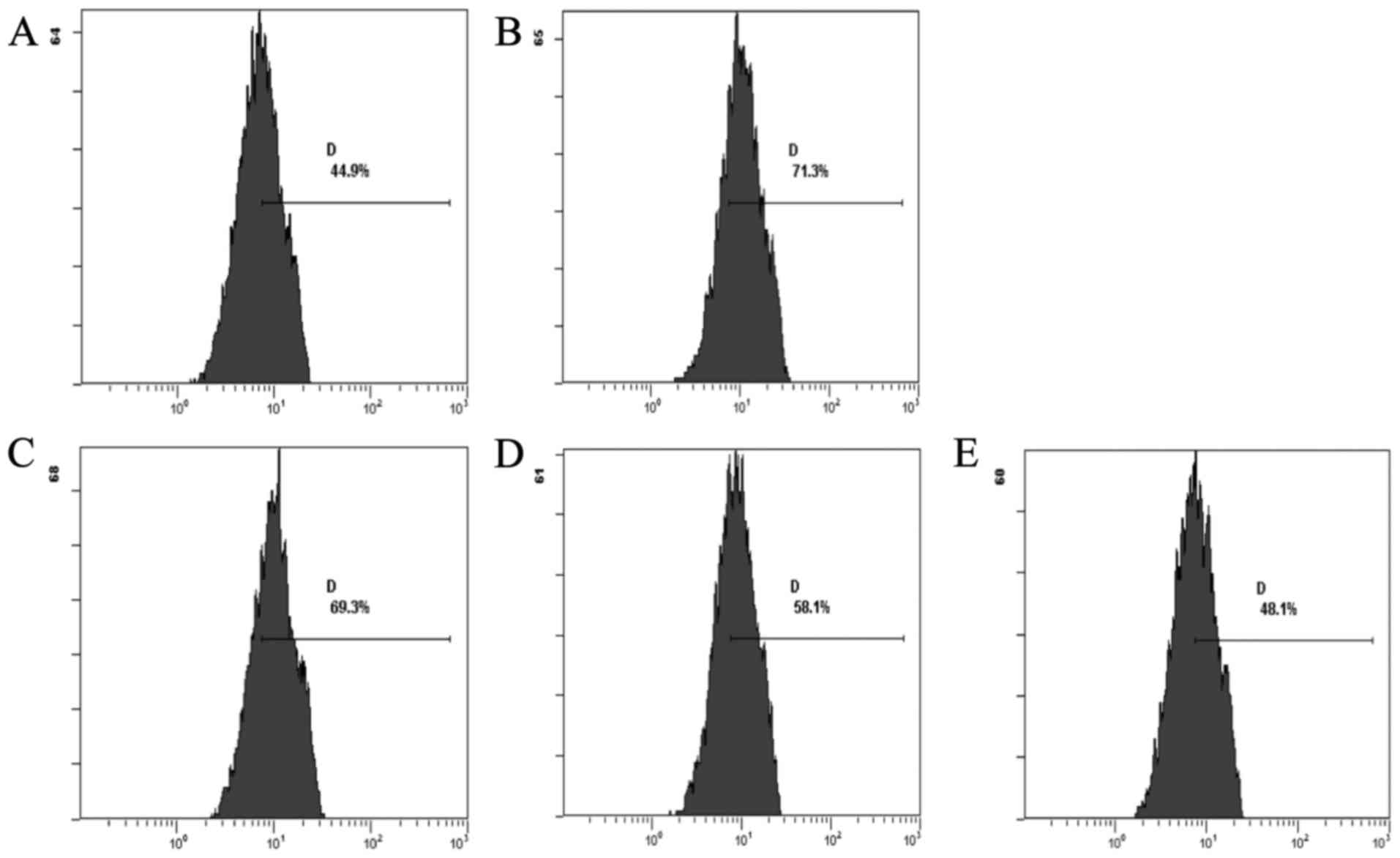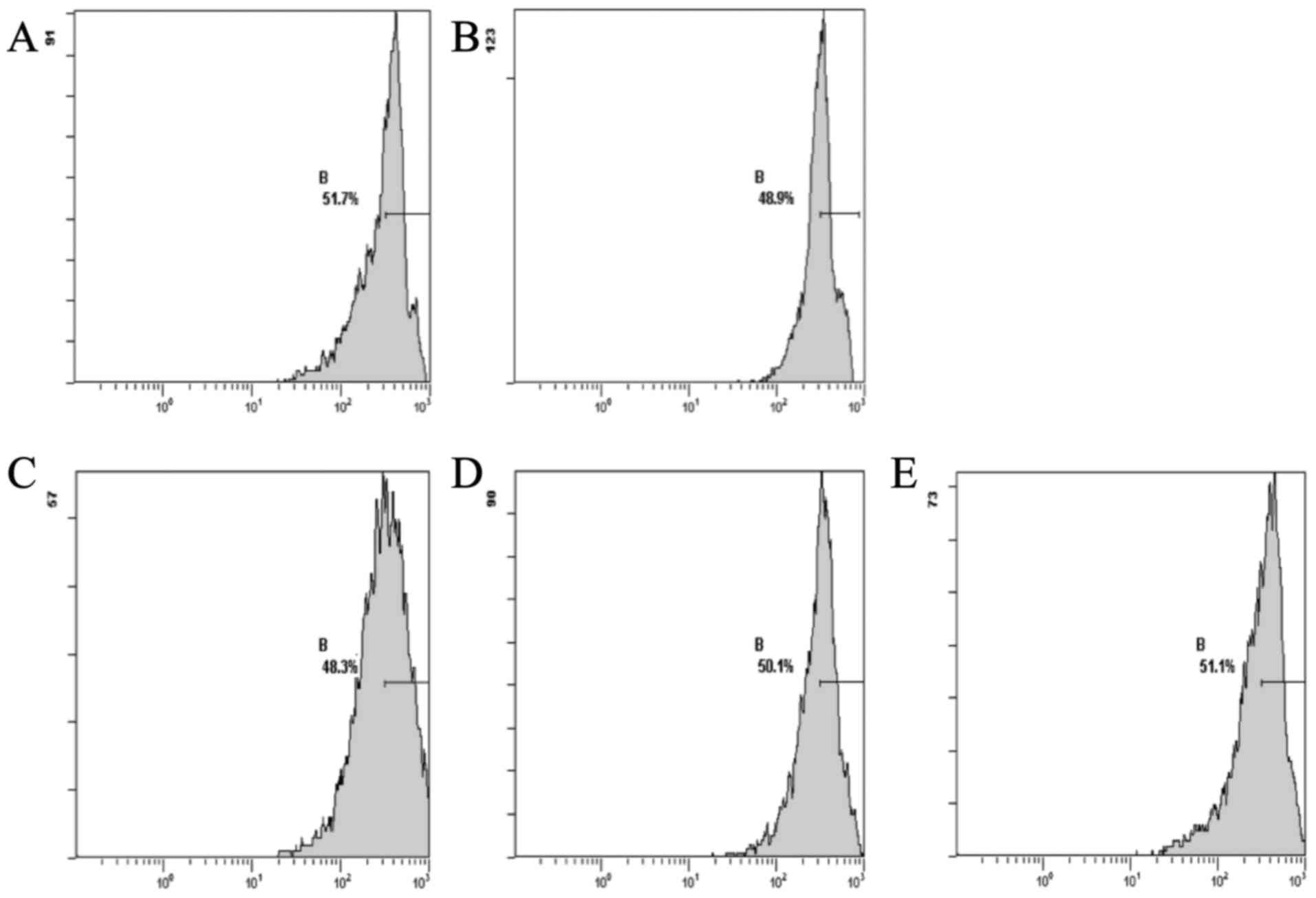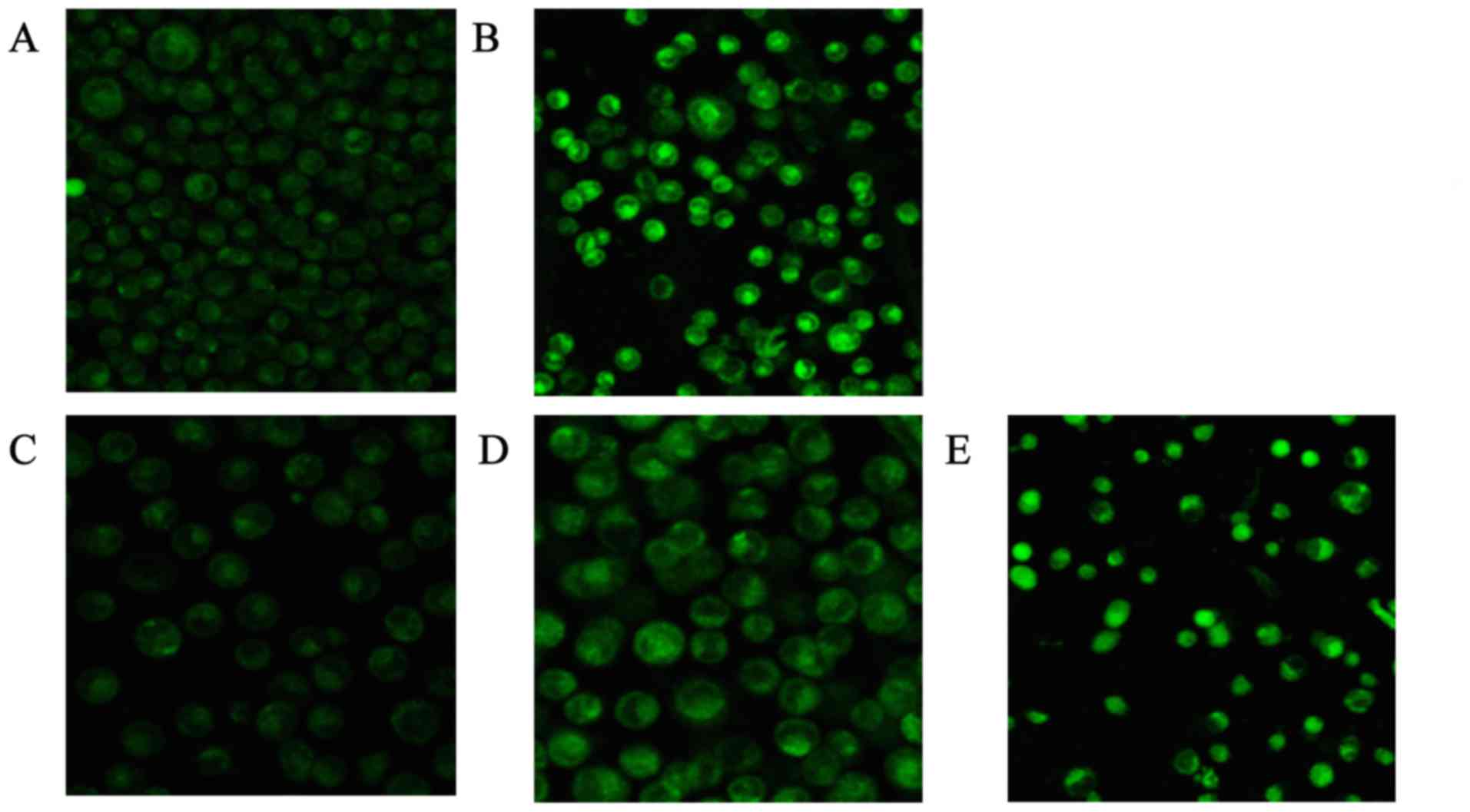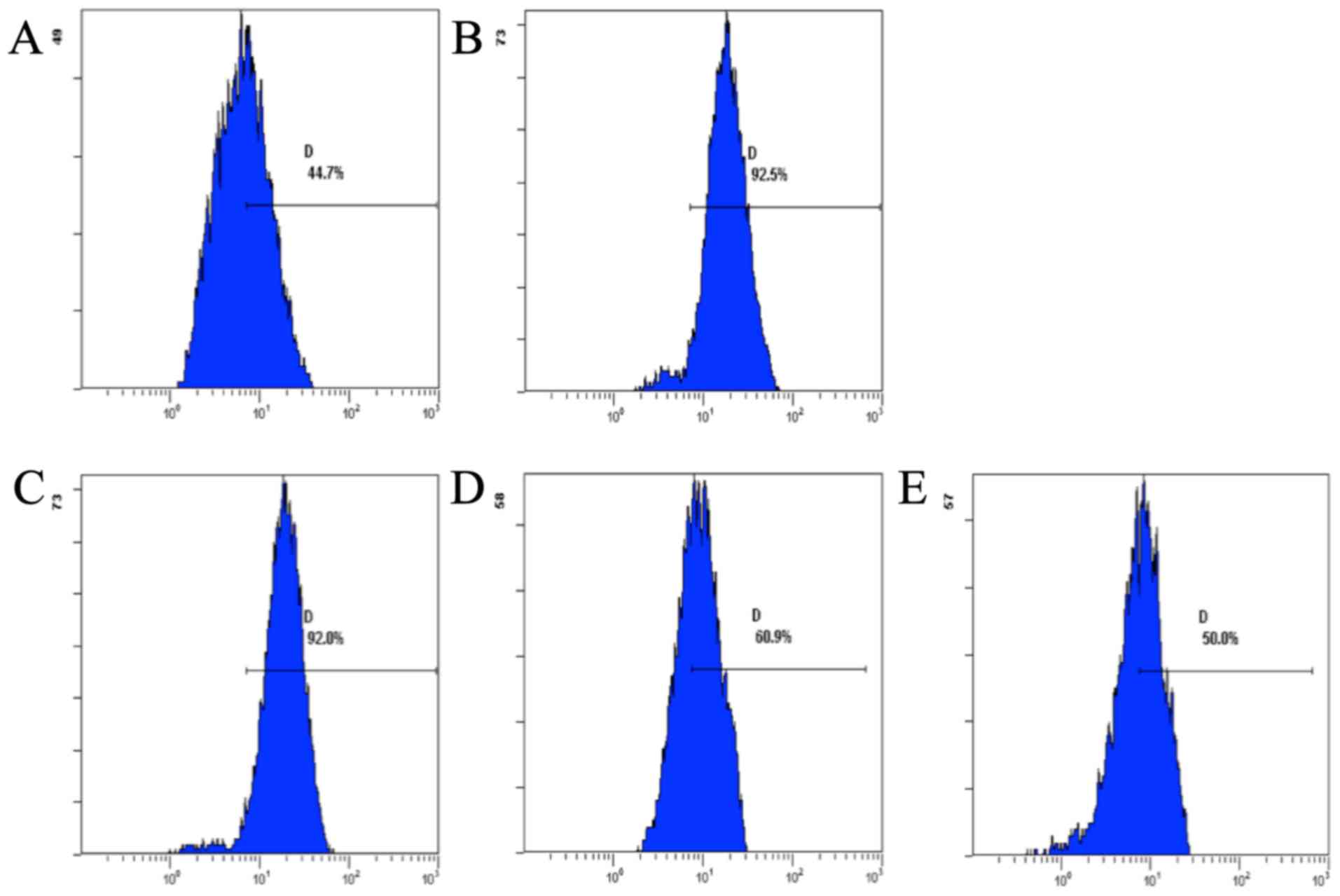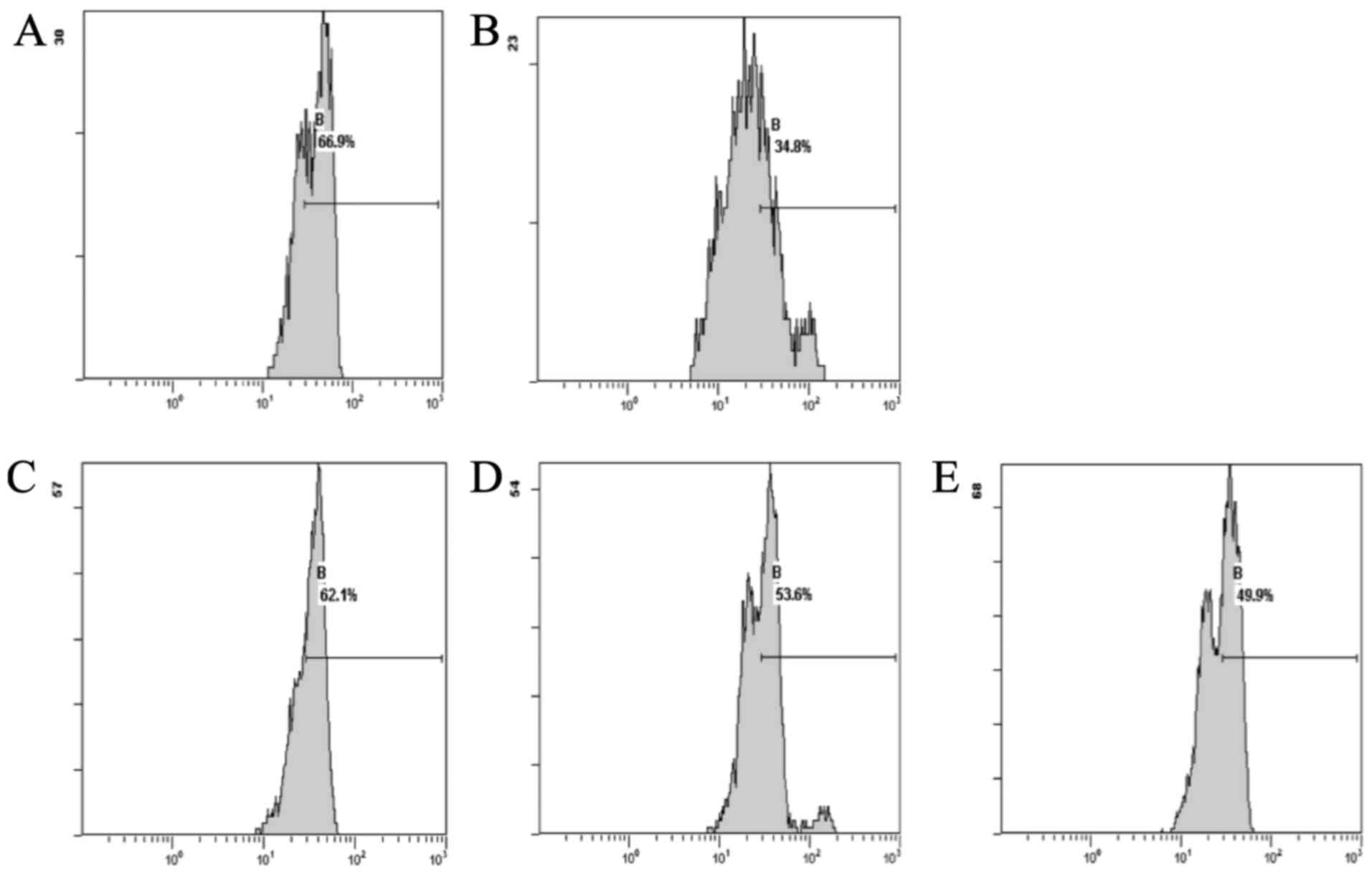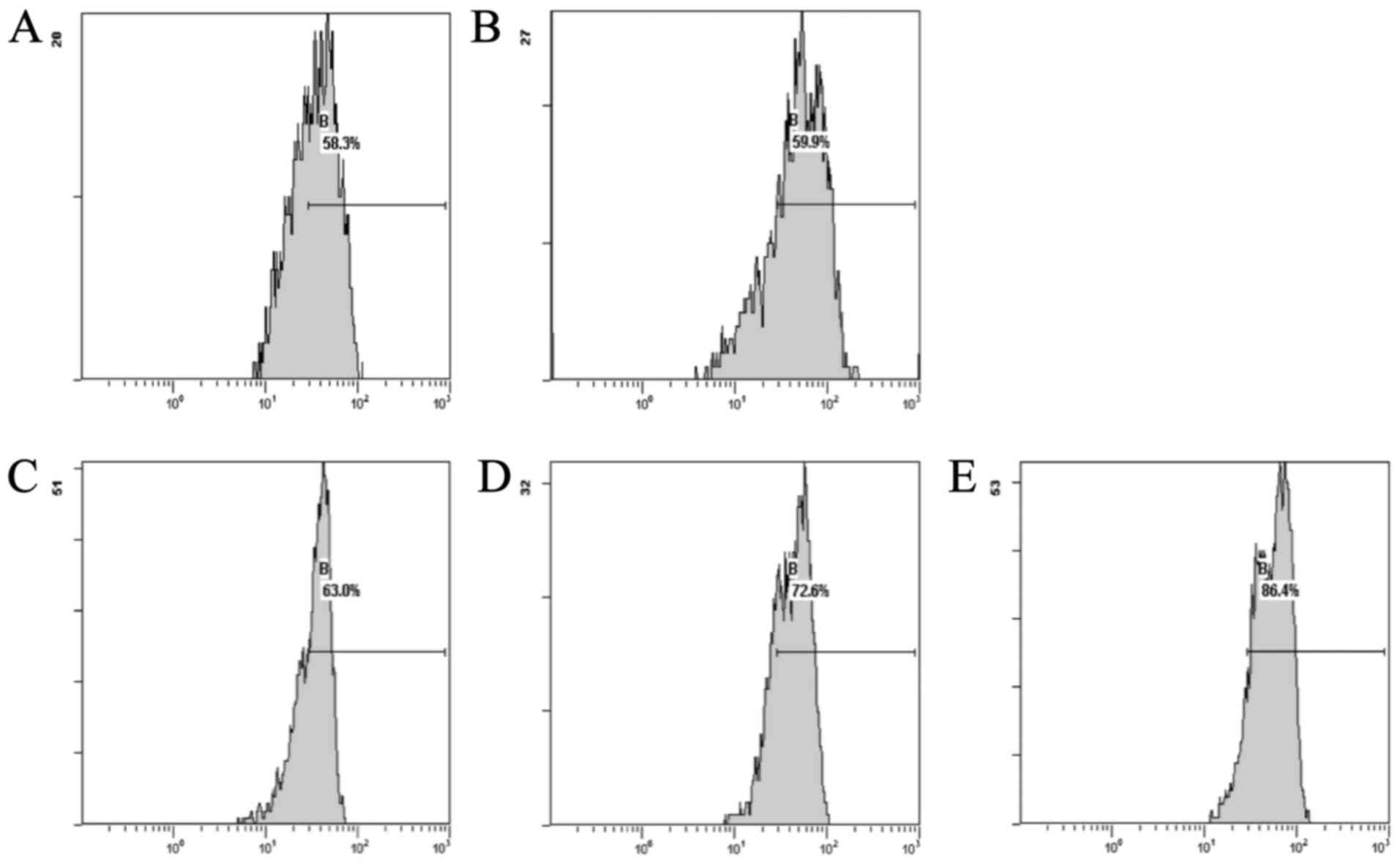|
1
|
Germanò MP, De Pasquale R, D'Angelo V,
Catania S, Silvari V and Costa C: Evaluation of extracts and
isolated fraction from Capparis spinosa L. buds as an antioxidant
source. J Agric Food Chem. 50:1168–1171. 2002.
|
|
2
|
Orphanos PI: Germination of caper
(Capparis spinosa L.) seeds. J Hortic Sci. 58:267–270. 1983.
View Article : Google Scholar
|
|
3
|
Higton RN and Akeroyd JR: Variation in
Capparis spinosa L. in Europe. Bot J Linn Soc. 106:104–112.
1991.
|
|
4
|
Castro Ramos RD and Nosti Vega M: The
caper (Capparis spinosa L.). Grasas Aceites. 38:183–186. 1987.
|
|
5
|
Aytaç Z and Kınaci Ceylan GA: Yield and
some morphological characteristics of caper (Capparis spinosa L.)
population cultivated at various slopes in Aegean ecological
conditions. Pak J Bot. 2:591–596. 2009.
|
|
6
|
Kulisic-Bilusic T, Schmöller I, Schnäbele
K, Siracusa L and Ruberto G: The anticancerogenic potential of
essential oil and aqueous infusion from caper (Capparis spinosa
L.). Food Chem. 1:261–267. 2012. View Article : Google Scholar
|
|
7
|
Tlili N, Khaldi A, Triki S and Munné-Bosch
S: Phenolic compounds and vitamin antioxidants of caper (Capparis
spinosa). Plant Foods Hum Nutr. 65:260–265. 2010. View Article : Google Scholar : PubMed/NCBI
|
|
8
|
Bonina F, Puglia C, Ventura D, Aquino R,
Tortora S, Sacchi A, Saija A, Tomaino A, Pellegrino ML and de
Caprariis P: In vitro antioxidant and in vivo photoprotective
effects of a lyophilized extract of Capparis spinosa L buds. J
Cosmet Sci. 53:321–335. 2002.PubMed/NCBI
|
|
9
|
Siracusa L, Kulisic-Bilusic T, Politeo O,
Krause I, Dejanovic B and Ruberto G: Phenolic composition and
antioxidant activity of aqueous infusions from Capparis spinosa L.
and Crithmum maritimum L. before and after submission to a two-step
in vitro digestion model. J Agric Food Chem. 59:12453–12459.
2011.
|
|
10
|
Abraham SV Issac, Palani A, Ramaswamy BR,
Shunmugiah KP and Arumugam VR: Antiquorum sensing and antibiofilm
potential of Capparis spinosa. Arch Med Res. 42:658–668. 2011.
View Article : Google Scholar : PubMed/NCBI
|
|
11
|
al-Said MS, Abdelsattar EA, Khalifa SI and
el-Feraly FS: Isolation and identification of an anti-inflammatory
principle from Capparis spinosa. Pharmazie. 43:640–641.
1988.PubMed/NCBI
|
|
12
|
Boga C, Forlani L, Calienni R, Hindley T,
Hochkoeppler A, Tozzi S and Zanna N: On the antibacterial activity
of roots of Capparis spinosa L. Nat Prod Res. 25:417–421. 2011.
View Article : Google Scholar : PubMed/NCBI
|
|
13
|
Gadgoli C and Mishra SH: Antihepatotoxic
activity of p-methoxy benzoic acid from Capparis spinosa. J
Ethnopharmacol. 66:187–192. 1999. View Article : Google Scholar : PubMed/NCBI
|
|
14
|
Huseini HF, Hasani-Rnjbar S, Nayebi N,
Heshmat R, Sigaroodi FK, Ahvazi M, Alaei BA and Kianbakht S:
Capparis spinosa L. (Caper) fruit extract in treatment of type 2
diabetic patients: A randomized double-blind placebo-controlled
clinical trial. Complement Ther Med. 21:447–452. 2013.
|
|
15
|
Lam SK and Ng TB: A protein with
antiproliferative, antifungal and HIV-1 reverse transcriptase
inhibitory activities from caper (Capparis spinosa) seeds.
Phytomedicine. 16:444–450. 2009. View Article : Google Scholar : PubMed/NCBI
|
|
16
|
Eddouks M, Lemhadri A and Michel JB:
Hypolipidemic activity of aqueous extract of Capparis spinosa L. in
normal and diabetic rats. J Ethnopharmacol. 98:345–350. 2005.
View Article : Google Scholar
|
|
17
|
Ali-Shtayeh MS and Abu Ghdeib SI:
Antifungal activity of plant extracts against dermatophytes.
Mycoses. 42:665–672. 1999. View Article : Google Scholar : PubMed/NCBI
|
|
18
|
Zhou HF, Xie C, Jian R, Kang J, Li Y,
Zhuang CL, Yang F, Zhang LL, Lai L, Wu T, et al: Biflavonoids from
caper (Capparis spinosa L.) fruits and their effects in inhibiting
NF-kappa B activation. J Agric Food Chem. 59:3060–3065. 2011.
View Article : Google Scholar : PubMed/NCBI
|
|
19
|
Ziyyat A, Legssyer A, Mekhfi H, Dassouli
A, Serhrouchni M and Benjelloun W: Phytotherapy of hypertension and
diabetes in oriental Morocco. J Ethnopharmacol. 58:45–54. 1997.
View Article : Google Scholar : PubMed/NCBI
|
|
20
|
Houghton PJ, Hylands PJ, Mensah AY, Hensel
A and Deters AM: In vitro tests and ethnopharmacological
investigations: Wound healing as an example. J Ethnopharmacol.
100:100–107. 2005. View Article : Google Scholar : PubMed/NCBI
|
|
21
|
Wu JB, Ye SF, Liang CL, Li YC, Yu YJ, Lai
JM, Lin H, Zheng J and Zhou JY: Qi-Dan Fang ameliorates
adriamycin-induced nephrotic syndrome rat model by enhancing renal
function and inhibiting podocyte injury. J Ethnopharmacol.
151:1124–1132. 2014. View Article : Google Scholar : PubMed/NCBI
|
|
22
|
Unverferth DV, Magorien RD, Leier CV and
Balcerzak SP: Doxorubicin cardiotoxicity. Cancer Treat Rev.
9:149–164. 1982. View Article : Google Scholar : PubMed/NCBI
|
|
23
|
Alexander J, Dainiak N, Berger HJ, Goldman
L, Johnstone D, Reduto L, Duffy T, Schwartz P, Gottschalk A, Zaret
BL, et al: Serial assessment of doxorubicin cardiotoxicity with
quantitative radionuclide angiocardiography. N Engl J Med.
300:278–283. 1979. View Article : Google Scholar : PubMed/NCBI
|
|
24
|
Legha SS, Benjamin RS, Mackay B, Ewer M,
Wallace S, Valdivieso M, Rasmussen SL, Blumenschein GR and
Freireich EJ: Reduction of doxorubicin cardiotoxicity by prolonged
continuous intravenous infusion. Ann Intern Med. 96:133–139. 1982.
View Article : Google Scholar : PubMed/NCBI
|
|
25
|
Arola OJ, Saraste A, Pulkki K, Kallajoki
M, Parvinen M and Voipio-Pulkki LM: Acute doxorubicin
cardiotoxicity involves cardiomyocyte apoptosis. Cancer Res.
60:1789–1792. 2000.PubMed/NCBI
|
|
26
|
Ji YB and Yu L: N-butanol extract of
Capparis spinosa L. induces apoptosis primarily through a
mitochondrial pathway involving mPTP open, cytochrome C release and
caspase activation. Asian Pac J Cancer Prev. 15:9153–9157.
2014.
|
|
27
|
Hossain MA and Rahma SMM: Total phenolics
flavonoids and antioxidant activity of tropical fruit pineapple.
Food Res Int. 3:672–676. 2011. View Article : Google Scholar
|
|
28
|
Wallimann T, Wyss M, Brdiczka D, Nicolay K
and Eppenberger HM: Intracellular compartmentation, structure and
function of creatine kinase isoenzymes in tissues with high and
fluctuating energy demands: The ‘phosphocreatine circuit’ for
cellular energy homeostasis. Biochem J. 281:21–40. 1992. View Article : Google Scholar : PubMed/NCBI
|
|
29
|
Obradovic M, Bjelogrlic P, Rizzo M,
Katsiki N, Haidara M, Stewart AJ, Jovanovic A and Isenovic ER:
Effects of obesity and estradiol on
Na+/K+-ATPase and their relevance to
cardiovascular diseases. J Endocrinol. 218:R13–R23. 2013.
View Article : Google Scholar : PubMed/NCBI
|
|
30
|
Pryor WA and Stanley JP: Letter: A
suggested mechanism for the production of malonaldehyde during the
autoxidation of polyunsaturated fatty acids. Nonenzymatic
production of prostaglandin endoperoxides during autoxidation. J
Org Chem. 40:3615–3617. 1975.
|
|
31
|
Bani S, Gautam M, Sheikh FA, Khan B, Satti
NK, Suri KA, Qazi GN and Patwardhan B: Selective Th1 up-regulating
activity of Withania somnifera aqueous extract in an experimental
system using flow cytometry. J Ethnopharmacol. 107:107–115. 2006.
View Article : Google Scholar : PubMed/NCBI
|
|
32
|
Jaiswal PK, Gupta J, Shahni S and Thakur
IS: NADPH oxidase-mediated superoxide production by intermediary
bacterial metabolites of dibenzofuran: A potential cause for
trans-mitochondrial membrane potential (ΔΨm) collapse in human
hepatoma cells. Toxicol Sci. 147:17–27. 2015. View Article : Google Scholar : PubMed/NCBI
|
|
33
|
Hoffman A, Goetz M, Vieth M, Galle PR,
Neurath MF and Kiesslich R: Confocal laser endomicroscopy:
Technical status and current indications. Endoscopy. 38:1275–1283.
2006. View Article : Google Scholar : PubMed/NCBI
|
|
34
|
Fernando KC and Barritt GJ: Pinocytosis in
2,5-di-tert-butylhydroquinone-stimulated hepatocytes and evaluation
of its role in Ca2+ inflow. Mol Cell Biochem. 162:23–29.
1996. View Article : Google Scholar : PubMed/NCBI
|
|
35
|
Devasagayam TPA, Tilak JC, Boloor KK, Sane
KS, Ghaskadbi SS and Lele RD: Free radicals and antioxidants in
human health: Current status and future prospects. J Assoc
Physicians India. 52:794–804. 2004.PubMed/NCBI
|
|
36
|
Lo K, Brinkman RR and Gottardo R:
Automated gating of flow cytometry data via robust model-based
clustering. Cytometry A. 73:321–332. 2008. View Article : Google Scholar : PubMed/NCBI
|
|
37
|
Julius MH, Masuda T and Herzenberg LA:
Demonstration that antigen-binding cells are precursors of
antibody-producing cells after purification with a
fluorescence-activated cell sorter. Proc Natl Acad Sci USA.
69:1934–1938. 1972. View Article : Google Scholar : PubMed/NCBI
|
|
38
|
Basiji DA, Ortyn WE, Liang L,
Venkatachalam V and Morrissey P: Cellular image analysis and
imaging by flow cytometry. Clin Lab Med. 27653–670. (viii)2007.
View Article : Google Scholar : PubMed/NCBI
|
|
39
|
Schlattner U, Tokarska-Schlattner M and
Wallimann T: Mitochondrial creatine kinase in human health and
disease. Biochim Biophys Acta. 1762:164–180. 2006. View Article : Google Scholar : PubMed/NCBI
|
|
40
|
Vlkovicová J, Javorková V, Mézesová L,
Pechánová O, Andriantsitohaina R and Vrbjar N: Dual effect of
polyphenolic compounds on cardiac
Na+/K+-ATPase during development and
persistence of hypertension in rats. Can J Physiol Pharmacol.
87:1046–1054. 2009. View Article : Google Scholar : PubMed/NCBI
|
|
41
|
Ketzer LA, Arruda AP, Carvalho DP and de
Meis L: Cardiac sarcoplasmic reticulum Ca2+-ATPase: Heat
production and phospholamban alterations promoted by cold exposure
and thyroid hormone. Am J Physiol Heart Circ Physiol.
297:H556–H563. 2009. View Article : Google Scholar : PubMed/NCBI
|
|
42
|
Del Rio D, Stewart AJ and Pellegrini N: A
review of recent studies on malondialdehyde as toxic molecule and
biological marker of oxidative stress. Nutr Metab Cardiovasc Dis.
15:316–328. 2005. View Article : Google Scholar : PubMed/NCBI
|
|
43
|
Marnett LJ: Lipid peroxidation-DNA damage
by malondialdehyde. Mutat Res. 424:83–95. 1999. View Article : Google Scholar : PubMed/NCBI
|
|
44
|
Buranrat B and Connor JR: Cytoprotective
effects of ferritin on doxorubicin-induced breast cancer cell
death. Oncol Rep. 34:2790–2796. 2015.PubMed/NCBI
|
|
45
|
Han D, Williams E and Cadenas E:
Mitochondrial respiratory chain-dependent generation of superoxide
anion and its release into the intermembrane space. Biochem J.
353:411–416. 2001. View Article : Google Scholar : PubMed/NCBI
|
|
46
|
Sheng B, Xu G, Chen D, Chen J, Gao W, Gao
W, Li X, Yang J, Liu F, Gao Y, et al: TT-AOC, MDA, SOD, CAT and
IL-6 levels in rat pulmonary edema induced by hypobaric hypoxia. J
Third Mil Med Univ. 23:2364–2367. 2012.
|
|
47
|
Kirby AJ and Schmidt RJ: The antioxidant
activity of Chinese herbs for eczema and of placebo herbs - I. J
Ethnopharmacol. 56:103–108. 1997. View Article : Google Scholar : PubMed/NCBI
|
|
48
|
Szliszka E and Krol W: Soy isoflavones
augment the effect of TRAIL-mediated apoptotic death in prostate
cancer cells. Oncol Rep. 26:533–541. 2011.PubMed/NCBI
|
|
49
|
Fernandez-Sanz C, Ruiz-Meana M, Castellano
J, Miro-Casas E, Nuñez E, Inserte J, Vázquez J and Garcia-Dorado D:
Altered FoF1 ATP synthase and susceptibility to mitochondrial
permeability transition pore during ischaemia and reperfusion in
aging cardiomyocytes. Thromb Haemost. 113:441–451. 2015. View Article : Google Scholar : PubMed/NCBI
|
|
50
|
Watanabe T, Saotome M, Nobuhara M,
Sakamoto A, Urushida T, Katoh H, Satoh H, Funaki M and Hayashi H:
Roles of mitochondrial fragmentation and reactive oxygen species in
mitochondrial dysfunction and myocardial insulin resistance. Exp
Cell Res. 323:314–325. 2014. View Article : Google Scholar : PubMed/NCBI
|
|
51
|
Gauthier LD, Greenstein JL, Cortassa S,
O'Rourke B and Winslow RL: A computational model of reactive oxygen
species and redox balance in cardiac mitochondria. Biophys J.
105:1045–1056. 2013. View Article : Google Scholar : PubMed/NCBI
|
|
52
|
Slinchenko NM: Effect of fluoroaluminate
on the ATP-hydrolysing and Ca2+-transporting activity of
the purified Ca2+, Mg2+-ATPase of myometrium
cell plasma membranes. Ukr Biokhim Zh. 75:95–98. 2003.(In
Ukrainian).
|
|
53
|
Toledo-Maciel A, Gonçalves-Gomes S, de
Gouveia Castex M and Vieyra A: Progressive inactivation of plasma
membrane (Ca2++Mg2+)ATPase by Cd2+
in the absence of ATP and reversible inhibition during catalysis.
Biochemistry. 37:15261–15265. 1998. View Article : Google Scholar : PubMed/NCBI
|
|
54
|
Monaco G, Decrock E, Arbel N, van Vliet
AR, La Rovere RM, De Smedt H, Parys JB, Agostinis P, Leybaert L,
Shoshan-Barmatz V, et al: The BH4 domain of anti-apoptotic Bcl-XL,
but not that of the related Bcl-2, limits the voltage-dependent
anion channel 1 (VDAC1)-mediated transfer of pro-apoptotic
Ca2+ signals to mitochondria. J Biol Chem.
290:9150–9161. 2015. View Article : Google Scholar : PubMed/NCBI
|
|
55
|
Barrezueta LF, Oshima CT, Lima FO, De
Oliveira Costa H, Gomes TS, Neto RA and De Franco MF: The intrinsic
apoptotic signaling pathway in gastric adenocarcinomas of Brazilian
patients: Immunoexpression of the Bcl-2 family (Bcl-2, Bcl-x, Bak,
Bax, Bad) determined by tissue microarray analysis. Mol Med Rep.
3:261–267. 2010. View Article : Google Scholar : PubMed/NCBI
|
|
56
|
Rada B and Leto TL: Oxidative innate
immune defenses by Nox/Duox family NADPH oxidases. Contrib
Microbiol. 15:164–187. 2008. View Article : Google Scholar : PubMed/NCBI
|
|
57
|
Sumiyoshi H, Matsushita A, Nakamura Y,
Matsuda Y, Ishiwata T, Naito Z and Uchida E: Suppression of STAT5b
in pancreatic cancer cells leads to attenuated gemcitabine
chemoresistance, adhesion and invasion. Oncol Rep. 35:3216–3226.
2016.PubMed/NCBI
|
|
58
|
Park SY, Kim JY, Lee SM, Jun CH, Cho SB,
Park CH, Joo YE, Kim HS, Choi SK and Rew JS: Capsaicin induces
apoptosis and modulates MAPK signaling in human gastric cancer
cells. Mol Med Rep. 9:499–502. 2014.PubMed/NCBI
|
|
59
|
Muchmore SW, Sattler M, Liang H, Meadows
RP, Harlan JE, Yoon HS, Nettesheim D, Chang BS, Thompson CB, Wong
SL, et al: X-ray and NMR structure of human Bcl-xL, an
inhibitor of programmed cell death. Nature. 381:335–341. 1996.
View Article : Google Scholar : PubMed/NCBI
|
|
60
|
Sucha L, Hroch M, Rezacova M, Rudolf E,
Havelek R, Sispera L, Cmielova J, Kohlerova R, Bezrouk A and Tomsik
P: The cytotoxic effect of α-tomatine in MCF-7 human adenocarcinoma
breast cancer cells depends on its interaction with cholesterol in
incubation media and does not involve apoptosis induction. Oncol
Rep. 30:2593–2602. 2013.PubMed/NCBI
|



